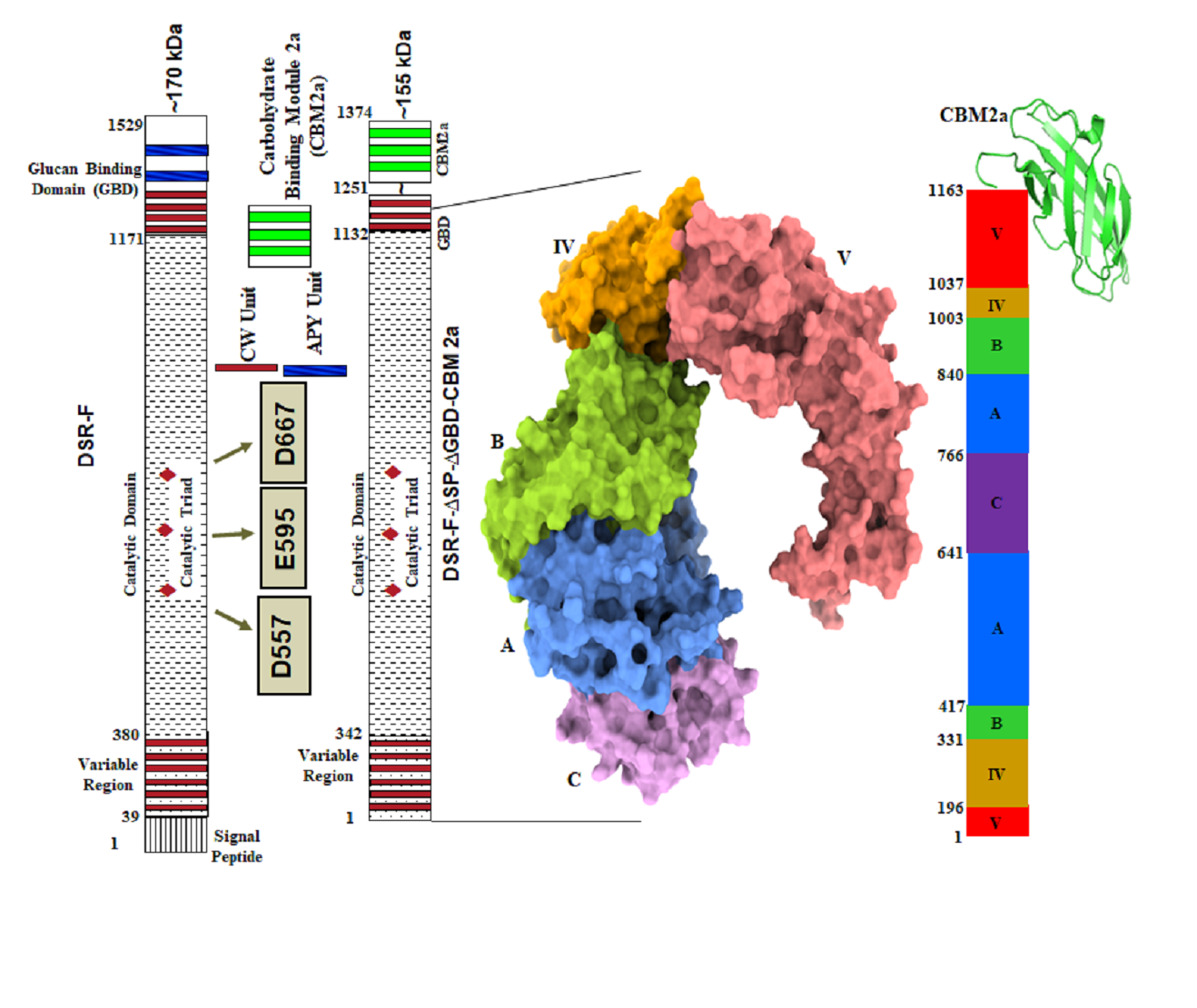The lactic acid bacteria (LAB) have great potential to produce homoexopolysaccharides (HoPS), have been the subject of extensive research efforts, given their health benefits and physicochemical properties. The HoPS functional properties are determined by structural characteristics of varied molecular weights, types of glycosidic linkages, degrees of branching and chemical composition. The dextransucrases (DSases) are responsible of the synthesis of a kind of HoPS (dextran polymers), which are among the first biopolymers produced at industrial scale with applications in medicine and biotechnology. The concept of glycodiversification opens additional applications for DSases. In that sense the design and characterization of new DSases is of prime importance. Previously, we described the isolation and characterization of a novel extracellular dextransucrase (DSR-F) encoding gene. In this study, from DSR-F, we design a novel chimeric dextransucrase DSR-F-∆SP-∆GBD-CBM2a, where DSR-F-∆SP-∆GBD is fused to the carbohydrate-binding module (CBM2a) of the β-1-4 exoglucanase/xylanase Cex (Xyn10A) of Cellulomonas fimi ATCC 484. This dextransucrase variant is active and without alteration in its specificity. The DSR-F-∆SP-∆GBD-CBM2a is purified by cellulose affinity chromatography for the very first time. Our results indicate that new hybrids and chimeric DSases with novel binding capacity to cellulose can be designed to obtain glyco-biocatalysts from renewable lignocellulosic materials.

